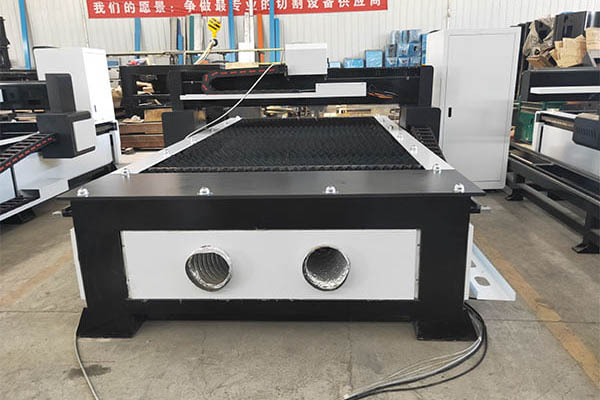Laser technology is at the core of CNC Fiber Laser cutting machines, driving their precision, efficiency, and versatility. Understanding the intricacies of laser technology helps in appreciating its applications and advantages in modern manufacturing..
How Laser Technology Works?
Fiber lasers utilize a different mechanism compared to traditional CO2 lasers. Here’s a breakdown of how they function:
Laser Generation
The laser beam in a fiber laser is generated through an active gain medium, typically an optical fiber doped with rare-earth elements such as ytterbium, erbium, or neodymium. Diode lasers pump energy into the fiber, exciting the doped atoms.
Light Amplification
The excited atoms within the doped fiber release photons, which are then amplified through the fiber’s core. The structure of the fiber ensures minimal loss and high efficiency in light transmission.

Beam Delivery
The amplified light is delivered through flexible fiber optic cables to the cutting head. This flexibility allows for easy integration into CNC systems and precise delivery of the laser beam to the material surface.
Beam Focusing
Within the cutting head, the laser beam passes through a series of lenses that focus it into a fine point. This focused beam is capable of delivering high power density to a very small area, enabling precise cutting.
Material Interaction
When the focused laser beam interacts with the material, it heats and melts or vaporizes the material along the cutting path. Assist gases, such as oxygen or nitrogen, are often used to blow away molten material and enhance cutting quality.
Advantages of Fiber Laser Technology
Fiber lasers achieve very high power densities by focusing the beam into a small spot. This allows them to cut thick and tough materials quickly and efficiently. They have excellent beam quality with low divergence and high coherence. This results in finer cuts and less material waste. The fiber maintains a stable and consistent beam profile.
These lasers are highly efficient, converting much of the electrical energy into laser energy. This reduces operational costs and power consumption, making them economical to operate. Their solid-state nature means fewer moving parts and a sealed design. This minimizes exposure to dust and contaminants, leading to lower maintenance needs and higher reliability.
Fiber laser sources are compact and integrate easily into different types of cutting machines and CNC systems. Their small footprint is advantageous in space-constrained manufacturing environments. They can cut a wide range of materials, including metals like steel, aluminum, brass, and copper. They also cut polymers and composites effectively, thanks to adjustable wavelength and power settings.

Applications of Fiber Laser Technology in CNC Cutting
Fiber lasers find extensive use in cutting metals across industries. Such as automotive, aerospace, and manufacturing, handling both thin and thick sheets of metal with high precision and speed. Their precision and ability to focus on very small areas make them ideal for micro-machining applications, creating tiny features in electronic components and medical devices.
Integrated with multi-axis CNC systems, fiber lasers perform 3D cutting tasks, creating complex shapes and geometries necessary for advanced manufacturing processes. Beyond cutting, fiber lasers excel in welding and engraving, allowing for high-quality welds and detailed engravings on various materials. In additive manufacturing, fiber lasers play a crucial role in processes like selective laser melting (SLM) and direct metal laser sintering (DMLS), fusing metal powders into solid structures efficiently and accurately.

Future Trends in Fiber LaserFuture Trends in Fiber Laser Technology Technology
Future trends in fiber laser technology include increased power output, leading to faster cutting speeds and the ability to cut thicker materials. Research focuses on improving beam quality, allowing for finer cuts and better surface finishes. Integration with AI and IoT will enhance automation and monitoring, creating smarter and more efficient manufacturing processes. The development of hybrid systems combines fiber lasers with other cutting technologies like plasma cutting, leveraging the strengths of each method for specific applications.






